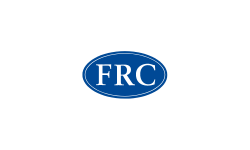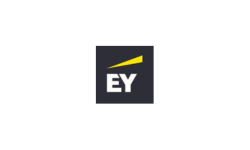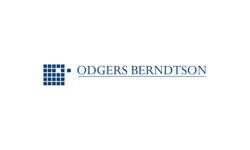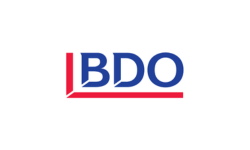The art of consensus on the board

Andy Davies is a Senior Partner with Kingsley Gate. Andy brings more than 25 years of leadership and executive search experience working across a range of publicly quoted, private equity-backed, and privately owned businesses. Working primarily at the board level within the sectors of Engineering & Manufacturing, Financial Services, and Technology, he has expertise in all leadership functions, including Chair and non-exec, financial, legal and company secretariat, as well as CEO and CIO.
https://www.kingsleygate.com/consultants/andy-davies/
https://www.linkedin.com/in/andydavies2/recent-activity/all/
Andy Davies explores common reasons for boardroom rifts and offers guidance on how to ensure that healthy disagreement between board members doesn’t turn into a battle
Introduction
One of the most common reasons for disagreement amongst board members is the question of who really owns the strategy. Most boards think that the board collectively owns the strategy rather than the executive. It’s also not uncommon for there to be differences of opinion on objectives and what targets to set for the business.
At the same time, British boards tend to be pretty good at sorting stuff out and don’t wash their dirty linen in public. This means that vehement disagreements are not common, because good Chairs will have identified any pressure points and issues before the meeting and will have spoken with the parties concerned. However, when a boardroom conflict does make the headlines, it can cause serious reputational harm and even impact a company’s value.
Why board conflict can be a good thing
When it comes to agreeing to disagree, consensus does not mean that everyone has to be on board with every decision. A certain level of conflict is the sign of a well-functioning board and it’s normal for people to disagree. Moreover, a healthy boardroom discussion requires multiple perspectives with a willingness to challenge assumptions and forge divergent views.
This is backed by research which supports the notion that the avoidance of conflict can actually negatively impact board performance. A 2017 paper from the University of Amsterdam, Participant Observation Study of Non-Executive Board Dynamic (Heemskerk, Heemskerk and Wats), notes that there are three types of board conflict: task, relationship, and board-to-CEO. The authors argue that task and relationship conflict are interdependent. While high task conflict can be positive for board task performance and agility ‒ because it increases the quality of strategic decision-making and helps to hedge against groupthink ‒ it can also trigger relationship conflict, which in turn decreases board task performance.
But as the 2008 CPP Global Human Capital Report put it, conflict can also lead to positive outcomes. ‘Conflict has a bounty of positive potential, which if harnessed correctly, can stimulate progress in ways harmony often cannot.’
The role of the Chair (and the seating plan)
In the boardroom, it’s up to the Chair to provide a safe and supportive environment and to ensure that discussions take place over a reasonable period of time. The Chair is also
responsible for creating a culture where differences of opinion can be voiced and disagreement occurs in a respectful way so that communication channels between board members stay open.
A clear and unambiguous process will allow for concerns to be raised and dealt with through a company’s statutory channels and the Corporate Governance Code also provides a framework for conflict resolution. The constitutional framework of the Corporate Governance Code also offers a way of defining relationships and conflict-resolution procedures between shareholders. Whilst it’s inevitable that there will be differences of opinion, they need to be dealt with in an even-handed and timely manner.
According to a 2017 report by The Chartered Governance Institute and Henley Business School, Conflict and Tension in the Boardroom, there are also practical steps that can be taken in the boardroom to reduce the potential for conflict. Take seating arrangements, for example. Simply sitting opposing members next to each other rather than opposite can help to prevent tension from escalating. Similarly, calling a time-out via a strategically timed coffee or lunch break can defuse tension and cool heads, while halting discussion on a contentious issue and bringing it back to the table later once greater information or clarity have been provided can play an important part in conflict avoidance.
But when major disagreements cannot be avoided, what no company wants is for them to made public, with the risk of damage to their corporate reputation and even to their share price. Nevertheless, it does happen. Here are some examples of headline-grabbing boardroom bust ups in recent years.
Scottish Mortgage Investment Trust – corporate governance row
In March 2023 it was announced that Fiona McBain, the Chair of Scottish Mortgage Investment Trust, one of the UK’s biggest tech investors, would stand down after a corporate governance row with one of the company’s non-execs, Professor Amar Bhidé, who was asked to resign after he voiced concerns about share price performance, investment strategy and a number of other issues.
This is a classic example of what can happen when dispute management goes wrong. The associated media hype highlighted that Scottish Mortgage’s governance failed to find a way to resolve the boardroom dispute internally.
NextGen Healthcare – divisive battle for control of the board
In September 2021 NextGen Healthcare’s founder, Sheldon Razin, brought the wrong sort of attention to the business when he launched a proxy campaign for an alternative slate of director
candidates for board seats in an effort to shake up the top leadership, citing the company's poor financial performance under the direction of Chair Jeffrey Margolis.
Clearly this is not a good approach, as a board should be able reach a consensus on its own composition. It also led to speculation that the founder was more interested in getting his own people on the board than in acting for the greater good of the company.
London Stock Exchange Group – regaining shareholder confidence
Whilst newspaper headlines fade fast, potential damage to investor relations could have a longer-term impact. The high-profile departure of London Stock Exchange Group’s Chair Donald Brydon, who announced that he would not seek re-election following his involvement in a boardroom coup against the leadership style of CEO Xavier Rolet, was unusual as it involved a FTSE 100 business and one of the UK’s most respected Chairs. The feud risked impacting relationships with major investors as well as drawing criticism that important resources had to be diverted to resolve the issue.
The skill of the Chair in facilitating consensus-building
Whilst it’s fine to disagree, the board’s job is to make decisions together and to reach a consensus. The most pivotal and trusted figure when it comes to reaching consensus is of course the Chair, whose effectiveness depends much on their emotional intelligence and understanding of the range of different personalities on the board. It’s also the Chair’s role to manage the advanced choreography that can be necessary if unwanted conflict at board meetings is to be avoided and to try to ensure that potential obstacles are resolved in advance of the meeting rather than during it.
In cases where a board-division risks descending into drama, diplomacy is required and the importance of de-personalising exchanges and taking the emotion out of the situation cannot be overstated. Another strategy to defuse conflict is to remind individuals that the common purpose of the board – pursuing the goals of the company ‒ is greater than the needs of individual members. Ideally, the Chair will reach out individually to the parties concerned to first understand their positions before then considering how a consensus can be reached. In many cases, a one-on-one meeting to discuss contentious issues can resolve disagreements. A good Chair will also be skilled at working with non-execs to encourage them to back the executives ‒ although there will of course be times when a non-exec may not agree to do this.
Real personality clashes can be harder to resolve, however, and may lead to a breakdown in the relationship between individuals. In these situations, it can be unavoidable that an aggrieved party either resigns or is asked to leave.
The role of the company secretary in dispute resolution
The Henley research also noted that company secretaries can play a critical role in conflict resolution, describing them as the ‘unsung heroes’ of the boardroom. ‘Company secretaries often find themselves in the position of being a sounding board for the worries and concerns of executives, non-execs and Chairs. They can act as a confidente for board members and smooth the edges of tensions in the boardroom.’
Company secretaries also have an important role to play as key advisers on matters of corporate governance. One of the reasons that dispute processes are so important is that they provide all parties with an agreed and prescribed pathway to resolution. In FTSE 250 companies and smaller businesses, secretaries often have a dual role where they also act as general counsel. As such it’s within their remit to assist the Chair and to intervene in the case of a board conflict or lack of consensus.
As the company secretary is normally responsible for organising board meetings and any general meetings, they can minimise the potential misunderstandings that may arise from a lack of timely information. And by helping to manage the information flow within the board and its committees, as well as between senior management and non-execs, a smooth pathway can be put in place ahead of board meetings. It’s also important that directors have enough time to fully absorb the information and, if necessary, do extra research.
Finally, the company secretary is there to document everything that has been said, and to capture the tone and intention of conversations, which is important as the process validates individual viewpoints and by doing so can ease tension. The process also ensures all opinions are taken into consideration in a way that’s transparent and clear for anyone who was not present on the day.
Conclusion
Unprecedented diversity on today’s boards brings with it a greater multiplicity of perspectives which also stimulates resilience and agility. At the same time, whilst increased diversity and new viewpoints can improve the depth and quality of board discussions, they can also increase the risk of disagreement.
And it’s not just diversity of thought and different viewpoints and perspectives that are at play. According to research we commissioned from FT Longitude of the Financial Times Group, nearly three-quarters (74%) of senior executives say that their values and beliefs often influence the way in which they make decisions. Here again, albeit at a more personal level, board diversity whilst an asset, can complicate consensus.
Andy Davies is a Senior Partner with Kingsley Gate. Andy brings more than 25 years of leadership and executive search experience working across a range of publicly quoted, private equity-backed, and privately owned businesses. Working primarily at the board level within the sectors of Engineering & Manufacturing, Financial Services, and Technology, he has expertise in all leadership functions, including Chair and non-exec, financial, legal and company secretariat, as well as CEO and CIO.









